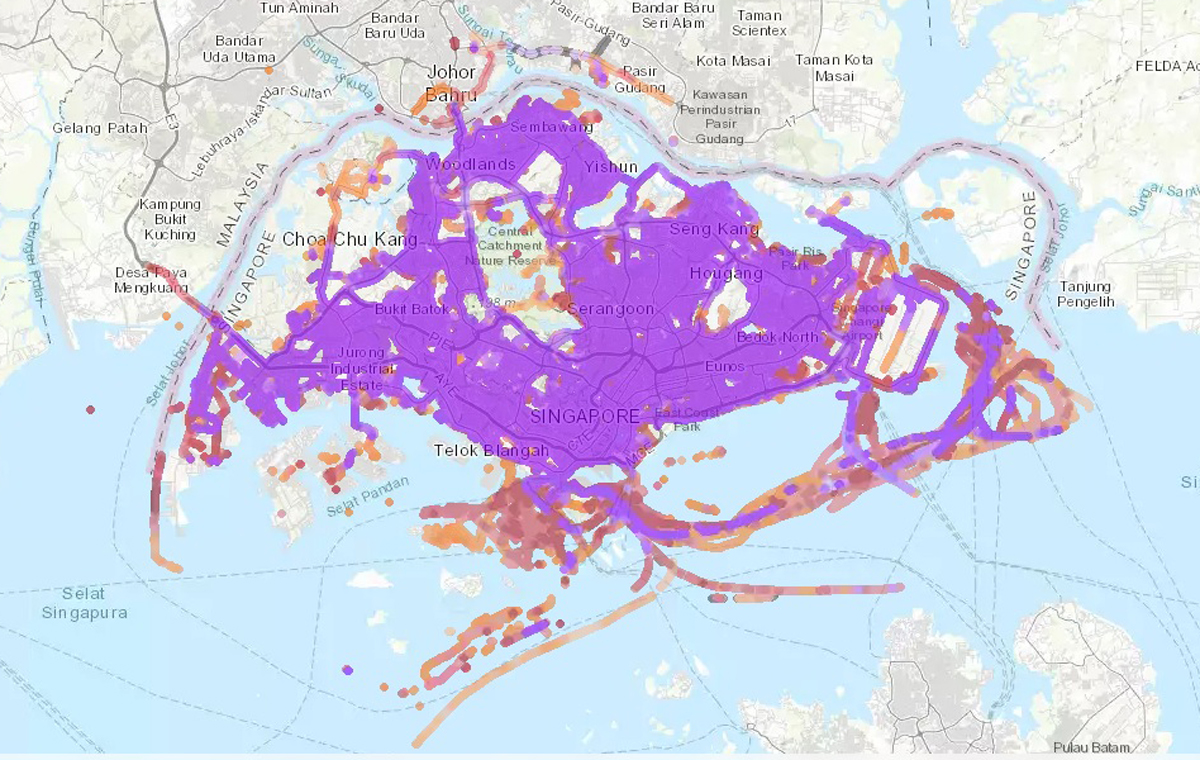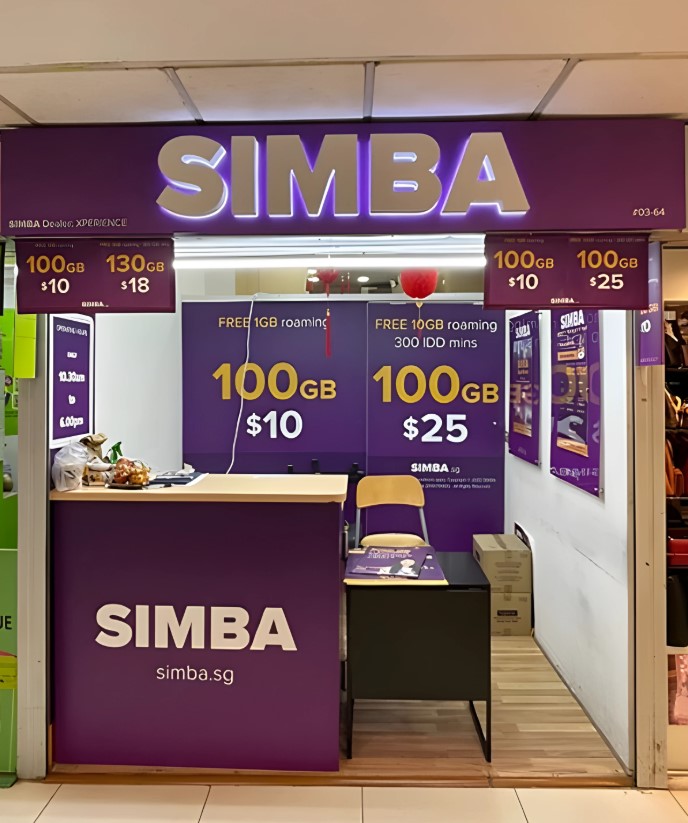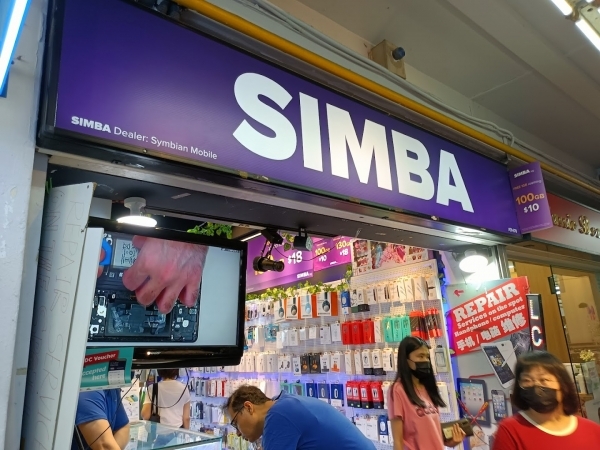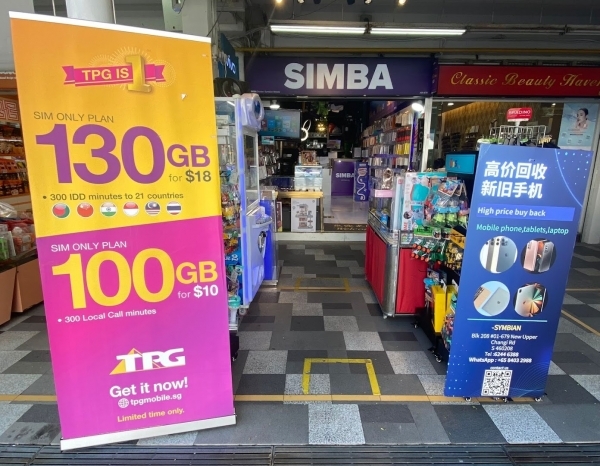Unleashing Success: How SIMBA is Soaring Amidst Singapore's Fiercely Competitive Market
SIMBA, formerly known as TPG Singapore, entered Singapore's wireless market as a Mobile Network Operator (MNO). Launching commercially in 2020, it offered a notably inexpensive plan: $10 for 50GB. Demonstrating substantial subscriber growth, SIMBA has acquired over 500,000 subscribers since rebranding in 2022, consistently adding at least 100,000 subscribers every six months.
Key findings reveal robust flowshare trends for SIMBA. Since its 2022 rebrand, SIMBA has consistently shown strong growth, achieving the highest competitive win share among the four MNOs in the last five quarters. Despite doubling in size and increasing market share, SIMBA's churn rate has remained low and stable over the past eighteen months, suggesting successful subscriber retention.
SIMBA's budget-friendly approach has proven successful, creating a greater market impact than other low-cost options. SIMBA attracts a larger proportion of its customer base from other MNOs compared to MVNOs and lower-priced sub-brands operated by its competitors. This is evident in SIMBA’s market-leading win share. SIMBA gains more users from StarHub than it loses, acquiring 2.4 customers for every one lost to StarHub in 2024. SIMBA also performs well against M1 and Singtel, but loses more customers to MVNOs and sub-brands.
Singapore has the fifth-highest cellular penetration in Asia (164%), making it a fiercely competitive mobile market. Singtel, StarHub, M1, and SIMBA, the most recent addition, are Singapore's MNOs. Singapore has more than 10 million mobile connections, according to GSMA Intelligence.
Following its 2022 rebranding from TPG to SIMBA, SIMBA added 566,000 subscribers over the course of three full years, ending FY22 1H with 487,000 subscribers and FY24 2H with 1,053,000 subscribers. Over the last three half-year periods, SIMBA has added over 100,000 new members, reaching a peak of 128K in H2 2023. This robust and steady growth is demonstrated by Opensignal's competitive switching data. Among Singapore's wireless operators, SIMBA had the largest Win Share from Q3 2023 to Q4 2024.
From FY2022 H1 to FY2024 H2, SIMBA's customer base more than doubled, and according to GSMA Intelligence, the company achieved a market share of over 10% in Q2 2024. Low market share operators or new entrants usually start out with low loss shares, which rise over time as these operators get bigger and add more churners to the market. Nevertheless, despite its expansion, SIMBA's loss share has remained comparatively steady and is still quite small. This suggests that SIMBA is not only gaining new members but also keeping existing ones on its network. Despite having the lowest loss share of the four Singaporean MNOs in this quarter, SIMBA's worst quarter in terms of loss share was Q3 2023, when it was 17.5%.

A New Player in a Competitive Arena
In the bustling telecommunications landscape of Singapore, where innovation meets competition, SIMBA Telecom has emerged as a formidable player since its inception in 2019. With the nation’s ambitious goal of achieving nationwide 5G coverage by 2025, SIMBA is strategically positioning itself to capitalize on the burgeoning demand for high-speed connectivity. This analysis delves into SIMBA Telecom's journey, its technical strategies, and the implications of its growth within Singapore's rapidly evolving 5G ecosystem.
Singapore's 5G Landscape: A Technological Revolution
Singapore is at the forefront of the global 5G revolution, driven by the Infocomm Media Development Authority (IMDA) and its Smart Nation initiative. The IMDA has set a target for 5G coverage to reach 50% of the population by the end of 2023, with plans for full coverage by 2025. This ambitious rollout is expected to contribute approximately SGD 8 billion to the economy by 2030, enhancing sectors such as healthcare, transportation, and smart city initiatives.
As of 2023, Singapore's telecommunications market is dominated by three major operators—Singtel, StarHub, and M1—alongside newer entrants like SIMBA Telecom. The competition is fierce, with these companies vying for market share in a landscape that is rapidly evolving due to technological advancements and changing consumer demands.
SIMBA Telecom's Strategic Entry and Growth
Founded with a vision to disrupt the telecommunications market, SIMBA Telecom has quickly gained traction by focusing on affordability and customer-centric services. The company’s entry into the 5G space is characterized by strategic partnerships with established infrastructure providers, allowing it to leverage existing networks while minimizing capital expenditures.
Key Strategies:
-
Affordable Pricing Models: SIMBA Telecom has adopted a competitive pricing strategy, offering flexible plans that cater to various consumer needs. For instance, its SIM-only plans start as low as SGD 15 per month, making it an attractive option for budget-conscious consumers and small businesses.
-
Customer Experience Focus: SIMBA places a strong emphasis on customer service, utilizing digital platforms for seamless onboarding and support. The company has implemented a user-friendly mobile app that allows customers to manage their accounts, track data usage, and access customer support with ease.
-
Strategic Partnerships: By collaborating with established telecommunications infrastructure providers, SIMBA has accelerated its 5G rollout. These partnerships enhance network reliability and provide access to advanced technologies, enabling SIMBA to offer robust services to its customers.
Technological Innovations Driving SIMBA's 5G Deployment
As of 2023, SIMBA Telecom has made significant strides in deploying its 5G network, focusing on several key technological innovations that enhance its service offerings:
-
Network Slicing: SIMBA is leveraging network slicing technology to create virtualized network segments tailored to specific user requirements. This allows for optimized resource allocation and the delivery of specialized services across various sectors, including healthcare and logistics. For example, SIMBA can provide low-latency connections for telemedicine applications, ensuring that critical health data is transmitted in real-time.
-
Edge Computing Integration: By incorporating edge computing capabilities, SIMBA can significantly reduce latency and improve the performance of applications requiring real-time data processing. This is particularly advantageous for IoT applications, where timely data transmission is essential. With edge computing, SIMBA can support smart city initiatives, such as traffic management systems that rely on real-time data analysis.
-
Enhanced Mobile Broadband (eMBB): SIMBA's 5G network supports eMBB, enabling high-speed data transfer for applications such as video streaming and online gaming. This positions the company to attract a younger demographic that prioritizes high-quality digital experiences. In fact, SIMBA has reported a 40% increase in data consumption among its users since launching its 5G services.
Market Performance: SIMBA's Growth Metrics
Despite being a relatively new entrant, SIMBA Telecom has shown promising growth in its subscriber base. Recent reports indicate that the company has captured approximately 5% of the market share within its first few years of operation, a notable achievement in a competitive environment dominated by established players.
Key Performance Indicators:
-
Subscriber Growth Rate: SIMBA has reported a year-on-year increase in subscribers, with a growth rate of approximately 30% in 2022. This growth is attributed to its competitive pricing and effective marketing strategies, which have resonated with consumers seeking affordable mobile services.
-
Customer Satisfaction Metrics: SIMBA has consistently received positive feedback regarding its customer service, achieving a customer satisfaction score of 85%, which exceeds the industry average. This emphasis on customer experience has been instrumental in building a loyal user base.
-
Revenue Growth Projections: The company’s revenue has shown a steady increase, with projections indicating a potential doubling of revenue by 2025 as 5G adoption accelerates. Analysts estimate that SIMBA's revenue could reach SGD 100 million by 2025, driven by increased subscriber growth and the expansion of value-added services.

Challenges in the Competitive Landscape
While SIMBA Telecom has made significant advancements, it faces several challenges in the competitive 5G landscape:
-
Intense Market Competition: The presence of established players like Singtel and StarHub, who possess extensive resources and brand recognition, poses a challenge for SIMBA. These competitors are also investing heavily in 5G technology and customer acquisition strategies, making it essential for SIMBA to differentiate itself through innovative offerings and superior customer service.
-
Regulatory Compliance: Navigating the regulatory landscape in Singapore can be complex. SIMBA must ensure compliance with the IMDA regulations while adapting to any changes in policy that may impact its operations. This includes adhering to standards for network security, data privacy, and service quality, which are critical in maintaining consumer trust.
-
Rapid Technological Advancements: The telecommunications sector is characterized by rapid technological evolution. SIMBA must continuously innovate to keep pace with emerging trends, such as advancements in artificial intelligence (AI), machine learning (ML), and network automation. This requires ongoing investment in research and development to enhance service offerings and maintain a competitive edge.
Future Outlook: Opportunities for Growth
Looking ahead, SIMBA Telecom is well-positioned to capitalize on the growing demand for 5G services in Singapore. The company’s focus on affordability, customer experience, and strategic partnerships will be crucial as it navigates the evolving telecommunications landscape.
Key Opportunities:
-
Expansion of IoT Services: With the increasing adoption of the Internet of Things (IoT), SIMBA can explore opportunities to provide specialized services for smart homes, connected vehicles, and industrial applications. By developing tailored IoT solutions, the company can tap into new revenue streams and enhance its market presence. For instance, SIMBA could offer smart home packages that integrate security systems, energy management, and home automation.
-
Collaboration with Technology Startups: Partnering with technology startups can foster innovation and accelerate the development of new applications and services. Collaborating with local tech firms can provide SIMBA with access to cutting-edge technologies and fresh ideas, enhancing its service portfolio. This could include partnerships for developing AI-driven customer service solutions or advanced analytics for network optimization.
-
Focus on Sustainability Initiatives: As sustainability becomes a priority for consumers and businesses, SIMBA can differentiate itself by adopting eco-friendly practices and promoting sustainable technology solutions. This could include initiatives such as energy-efficient network infrastructure and environmentally friendly customer service practices, appealing to environmentally conscious consumers.
-
Enhancing Digital Services: The demand for digital services, including mobile banking, e-commerce, and online entertainment, is on the rise. SIMBA can expand its service portfolio to include value-added digital services that cater to the evolving needs of consumers, thereby increasing customer engagement and loyalty. For example, SIMBA could introduce mobile payment solutions or partnerships with streaming services to offer bundled packages.
-
Investing in Advanced Network Technologies: To maintain a competitive edge, SIMBA should invest in advanced network technologies such as Massive MIMO (Multiple Input Multiple Output) and beamforming. These technologies can enhance network capacity and coverage, providing users with a superior experience. By implementing these technologies, SIMBA can improve its service quality and attract more customers.
A Promising Future for SIMBA Telecom
SIMBA Telecom's entry into Singapore's 5G market represents a significant development in the telecommunications landscape. With its competitive pricing, focus on customer experience, and strategic partnerships, the company has established a foothold in a challenging environment. As the demand for 5G services continues to grow, SIMBA is poised to leverage its strengths and capitalize on emerging opportunities.
However, the company must remain vigilant in addressing the challenges posed by intense competition and rapid technological advancements. By continuing to innovate and adapt to changing market dynamics, SIMBA Telecom can solidify its position as a key player in Singapore's 5G ecosystem and contribute to the nation's vision of becoming a global leader in digital connectivity.
As Singapore moves towards a fully integrated 5G future, SIMBA Telecom's journey will be one to watch, offering valuable insights into the strategies and innovations that define success in the telecommunications industry. The company's ability to navigate the complexities of the 5G landscape will not only shape its future but also influence the broader telecommunications sector in Singapore and beyond. With a commitment to innovation and customer satisfaction, SIMBA Telecom is set to play a pivotal role in the next chapter of Singapore's digital transformation.


